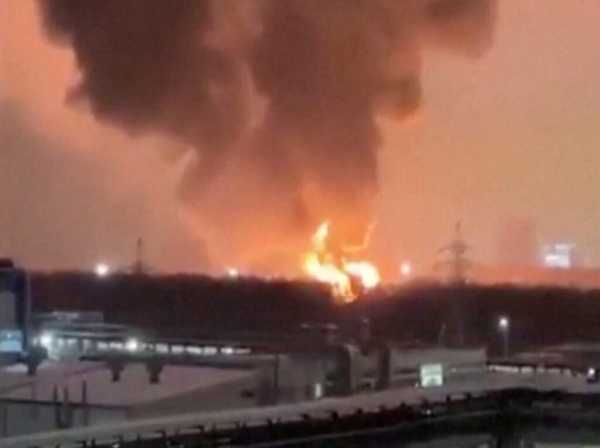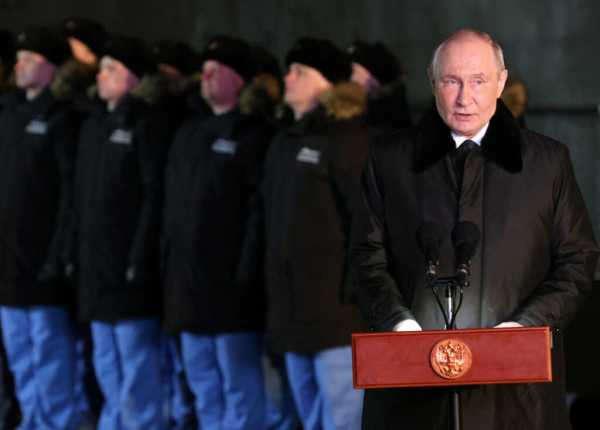
Ukraine launched what officials called the country’s “ largest ” air assault of the war this week as Kiev seeks to bring Putin’s invasion home. In the early morning hours of January 14, Ukrainian drones and missiles struck a number of strategic targets in several Russian regions, including Bryansk, Saratov, Tula and Tatarstan. The strikes, as far as 1,000 kilometers from the Ukrainian border, underscored Ukraine’s growing ability to conduct long-range bombing raids on high-value Russian targets.
This week’s attack was notable for both its scale and sophistication, using drones and missiles in coordinated airstrikes that exploited weaknesses in Russian air defenses. Officials from Ukraine’s 14th Independent Unmanned Aerial Systems Regiment confirmed that decoy drones were used to distract and suppress Russian air defenses, creating gaps for missiles to hit primary targets. Once defenses were compromised, some targets were then hit by additional waves of long-range drones.
While Russian officials have remained tight-lipped about the extent of the damage, media reports and open-source data indicate that a range of military and industrial targets were hit. The targets included oil refineries and storage facilities, an air base used to launch attacks on Ukraine, and various industrial facilities involved in producing materials critical to Russia’s military might.
These simultaneous strikes on multiple high-priority targets deep inside Russia highlight Ukraine’s ability to conduct increasingly sophisticated long-range air operations. The January 14 attacks required close coordination between Ukraine’s drone and missile crews, as well as military intelligence and special operations units.
Ukraine’s booming drone industry is at the center of Russia’s escalating air war. Since Russia’s full-scale invasion nearly three years ago, Ukrainian drone production has exploded, with hundreds of new companies from Ukraine’s dynamic tech sector emerging to develop and produce a wide range of different drone models.
Ukrainian authorities have sought to leverage this potential, creating the Brave1 platform in spring 2023 to streamline collaboration between the Ukrainian military, government agencies, private sector developers, and investors. In summer 2024, Ukraine became the first country to create a new branch of the armed forces dedicated to drone warfare. The creation of the Unmanned Systems Forces of Ukraine underscored the country’s focus on innovation as Kiev seeks to offset Russia’s often overwhelming advantage in manpower, firepower, and other vital military resources.
In addition to expanding its arsenal of long-range attack drones, Ukraine is also making a major push to develop its own missile production . In recent months, Ukrainian President Volodymyr Zelensky has shown off a number of new missiles as Kiev seeks to reduce its reliance on Western partners for missiles capable of striking targets inside Russia.
This emphasis on domestic production of drones and missiles is part of a broader shift away from reliance on foreign military aid. It also reflects long-standing frustration in Ukraine with the reluctance of the country’s partners to sanction attacks inside Russia for fear of possible retaliation from the Kremlin. While U.S. President Joe Biden partially lifted restrictions on strikes against Russian targets at the end of 2024, President-elect Donald Trump has since criticized the decision, adding weight to arguments that Ukraine should rely on its own drones and missiles to retaliate against Russia.
The impact of Ukrainian airstrikes on Russian soil goes far beyond disrupting military logistics, damaging oil refineries, and curtailing Russian military production. Along with Ukraine’s ongoing occupation of hundreds of square kilometers in Russia’s Kursk region, Ukraine’s air war is undermining Putin’s illusion of invulnerability and undermining Russian confidence in the Kremlin’s ability to defend the country.
Since February 2022, the Putin regime has gone to great lengths to shield the Russian public from the consequences of the war in Ukraine, while maintaining a semblance of normality. However, frequent images on social media of burning Russian infrastructure and powerful Ukrainian airstrikes now directly challenge Moscow’s tightly controlled narrative. This has caused a noticeable shift in sentiment, with even leading regime propagandists like Vladimir Solovyov now expressing their displeasure at the failure of Russia’s air defenses.
The growing signs of demoralization in Russia reflect a sobering realization that the country’s existing air defenses are incapable of dealing with Ukraine’s growing deep-strike capabilities. For Kyiv, this represents a significant window of opportunity. In all likelihood, Russia will eventually eliminate the vulnerabilities of its vast military and industrial infrastructure to drone and missile attacks. However, if Ukraine can continue to expand its current air offensive in the coming months, it may succeed in dealing a significant blow to the Russian war effort.
For now, Ukraine’s air strikes send a clear signal to Moscow and Kyiv’s partners that the Ukrainian military is capable of escalating on its own terms and does not share Western concerns about Russia’s so-called red lines. Maintaining this momentum and ensuring the means to continue offensive strikes inside Russia will be paramount in determining not only the direction of the war, but also its ultimate outcome.
Maria Avdeeva is a Ukrainian security analyst and strategic communications expert.
Source: Source



